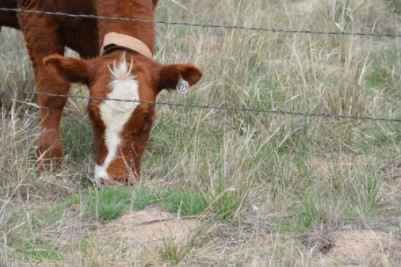By Ben Beckman
Fresh spring growth is a welcome sight for producers looking for animal forage. However, this lush growth may also be the perfect set of conditions for a case of grass tetany.
Grass tetany is the result of low levels of magnesium in an animal’s blood stream, often brought on by diet due to low magnesium levels in lush, newly growing grass. Calcium also plays a role, helping improve magnesium absorption. In lactating animals, this drain on magnesium and calcium from milk production throws these imbalances off even more. As a result, high milk producing and older animals are most at risk for developing tetany.
To prevent tetany problems this spring, it’s best to wait until grass in pastures has grown to at least 6 inches high before grazing. Legumes like alfalfa or clover are a good source of magnesium, so a diet of mixed grass and legumes can help balance mineral demands.
While cultural practices can reduce risk, providing correct and adequate mineral supplementation may be the most foolproof solution. Cattle should be consuming 3-4 ounces of mineral containing supplemental calcium daily and 10-13% magnesium oxide at least 30 days before grazing begins, to ensure proper intake has been established.
Most high magnesium mineral utilize magnesium oxide, which is bitter tasting and can reduce animal consumption. Mix magnesium fortified mineral with salt into a complete package or feed with a highly palatable protein or energy supplement to improve intake.
High magnesium mineral should be provided for animals until cool-season grasses slow down growth and the levels of lush, fresh forage are reduced — around mid-May.
Dealing with grass tetany in the spring doesn’t have to negatively impact your herd. Plan now to adjust grazing management or mineral supplementation for a tetany-free spring.
Flash Graze to Control Weeds in Pastures
By Jerry Volesky

Pastures are starting to green up. That is usually a good sign, except when most of the green is coming from weeds.
In warm-season grass pastures, an abundance of early weeds will remove moisture that could be used for grass growth later on and they remove valuable nutrients from the soil. Early weeds also can develop so much growth that they can shade, smother and reduce early growth of your summer pasture grasses.
Herbicides like glyphosate and imazapic (Plateau®) as well as prescribed burning can control many early weeds, but I think another method actually is better — grazing. Heavy, pre-season grazing costs you nothing. In fact, you get some feed from these weeds while herbicides or burning would only kill and remove growth. Plus, this early pasture might be especially valuable if it gets your cattle out of mud or saves you from feeding expensive hay this spring.
For mixed cool- and warm-season grass pastures, early flash grazing also can be used, but we do want to be a little more cautious as to not overgraze any desirable cool-season grasses. In areas where cheatgrass or downy brome is a problem, grazing at strategic windows — such as during the cheatgrass elongation phase right before seed set — appears to be the best time to apply grazing. Grazing at this time matches diet preference by grazing animals with the cheatgrass growth period and limits over use on perennial cool-season grasses growing at the same time. Targeted grazing is a long-term management option that can utilize cheatgrass as a forage resource and limit the potential seed proliferation within a system.
While early flash grazing of some pastures will not completely eliminate all the weeds, it can actually make for some pretty timely and valuable pasture.
2021 Pasture Rental Rates
By Todd Whitney
Preliminary Nebraska Farm Real Estate Market survey pasture rental rates are now posted on our Nebraska Extension Ag Economic website. The full final report is expected in early June.
Although higher crop grain prices have likely increased cropland rental agreements 6% compared to last year, average grazing land and hayland market values will likely increase 3% to 5%.
Unlike crop ground leases, which begin on March 1, handshake or verbal pasture leases are typically for a five-month grazing season. Since the lease is only in effect for that time, the lease is terminated at the end of the grazing season.
Written pasture rental agreements are strongly recommended over handshakes and verbal leases, and establishing fair rates are important although, at times, challenging. Variables such as grassland quality, pasture location, fence maintenance, water, management responsibilities and individual relationships all influence individual pasture rental rates.
According to this year’s survey, the average monthly rent being paid to graze a cow-calf pair this season is lowest in the Western Panhandle, at just over $39 per month per cow-calf pair. The highest average rate is in the Northern District at $63 per month, with the central region around $59 per month. Projecting these rates over a five-month grazing period, it will cost an average of $195 to $315 dollars to graze a cow-calf pair for the summer in Nebraska. Remember that these are only averages.
Pastures are a major resource for farmers, ranchers and our Nebraska cattle industry, and pasture rental is a critical factor in the financial well-being of both landlords and tenants. Knowing what others are paying for rental rates may help you negotiate a fair rate for yours.
Source : unl.edu